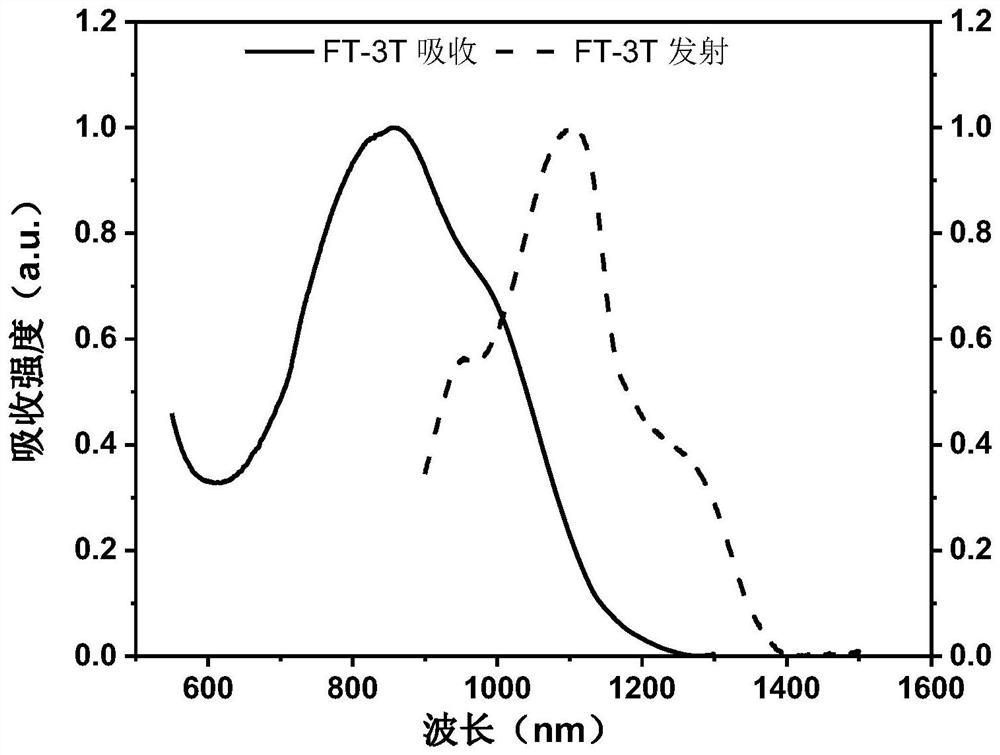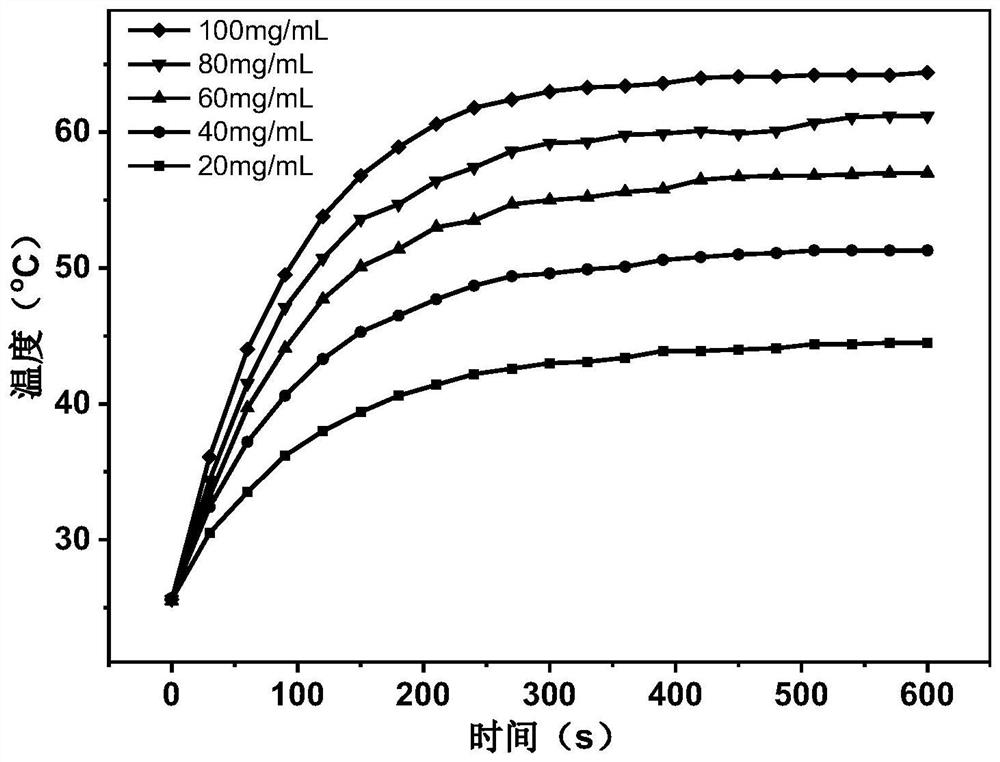Near-infrared two-zone dye, nano particle, and preparation method and application of near-infrared two-zone dye and nano particle
A nanoparticle and near-infrared technology, applied in the direction of organic dyes, azo dyes, chemical instruments and methods, etc., can solve the problems of few reports on organic small molecule diagnostic agents, achieve good clinical application prospects, good photothermal properties, small side effects
- Summary
- Abstract
- Description
- Claims
- Application Information
AI Technical Summary
Problems solved by technology
Method used
Image
Examples
Embodiment 1
[0041] A kind of dye FT-3T in the second zone of near infrared, its structural formula is:
[0042]
[0043] The preparation method of the above-mentioned near-infrared second zone dye FT-3T can be implemented with reference to the following examples:
Embodiment 2
[0045] A kind of preparation method of the dye FT-3T of two near-infrared regions described in embodiment 1, its synthetic route is:
[0046]
[0047] Specifically include the following steps:
[0048] (i) Weigh compound (1) (1 g, 1.91 mmol) and compound (2) (0.631 g, 1.91 mmol) in a reaction flask, add 20 mL of acetic acid as a solvent under nitrogen protection, and react at 100 ° C for 24 h. After the reaction was completed, the reaction solution was poured into water, extracted three times with dichloromethane, the organic phases were combined, dried over anhydrous sodium sulfate, and purified by column chromatography to obtain intermediate product (3) (1.4 g, yield 90%);
[0049]
[0050] (ii) Weigh the intermediate product (3) (1.4g, 1.71mmol), NBS (0.335g, 1.88mmol) in a reaction flask, use tetrahydrofuran as a solvent, and react at room temperature overnight in the dark. After the reaction was completed, the reaction solution was spin-dried and purified by chroma...
Embodiment 3
[0057] A nanoparticle of the second near-infrared dye FT-3T is prepared by the nano-co-precipitation method from the near-infrared second-region dye FT-3T described in Example 1 and the amphiphilic polymer F127.
[0058] The preparation method of the aqueous solution of the nanoparticle of above-mentioned FT-3T, comprises the following steps:
[0059] Step 1: Weigh 1 mg of FT-3T molecule, dissolve 20 mg of F127 in 2 mL of tetrahydrofuran, and dissolve by ultrasonication.
[0060] Step 2: quickly add the above mixture solution into 10 mL of deionized water under ultrasonication, and continue ultrasonication for 5 min.
[0061] Step 3: removing tetrahydrofuran in the obtained solution to obtain a 1 mg / mL nanoparticle solution.
[0062] figure 1 It is the absorption-emission spectrum of FT-3T nanoparticles described in Example 3 in aqueous solution. As shown in the figure, the maximum absorption peak of FT-3T nanoparticles in aqueous solution is at 856nm, and its absorption ta...
PUM
 Login to View More
Login to View More Abstract
Description
Claims
Application Information
 Login to View More
Login to View More - R&D
- Intellectual Property
- Life Sciences
- Materials
- Tech Scout
- Unparalleled Data Quality
- Higher Quality Content
- 60% Fewer Hallucinations
Browse by: Latest US Patents, China's latest patents, Technical Efficacy Thesaurus, Application Domain, Technology Topic, Popular Technical Reports.
© 2025 PatSnap. All rights reserved.Legal|Privacy policy|Modern Slavery Act Transparency Statement|Sitemap|About US| Contact US: help@patsnap.com



